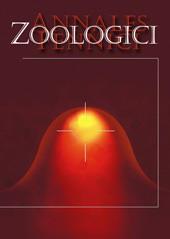While the non-random capture of prey by predators is well-known, few studies have investigated or compared the individual characteristics of prey selected by predators. This is due to the difficulty in assessing prey features based on the remains from pellets or faeces. This article shows relationships between craniometric features and body mass of the root vole (Microtus oeconomus). The comparisons involved 10 skull parameters: mandible length excluding incisors (ML), rostrum breadth (RB), mandibular tooth-row length (MT), foramina incisiva length (FI), upper- and lower-incisor lengths (UIL, LIL), upper- and lower-incisor breadths (UIB, LIB), upper- and lowerincisor weights (UIW, LIW). From cranial parameters listed above, only UIL was correlated with body mass with high accurancy. In this reason we highly recommended this parameter as a good indicator for calculating vole body mass.
How to translate text using browser tools
1 June 2008
Applicability of Cranial Features for the Calculation of Vole Body Mass
Zbigniew Borowski,
Marek Keller,
Agnieszka Włodarska
ACCESS THE FULL ARTICLE

Annales Zoologici Fennici
Vol. 45 • No. 3
June 2008
Vol. 45 • No. 3
June 2008




